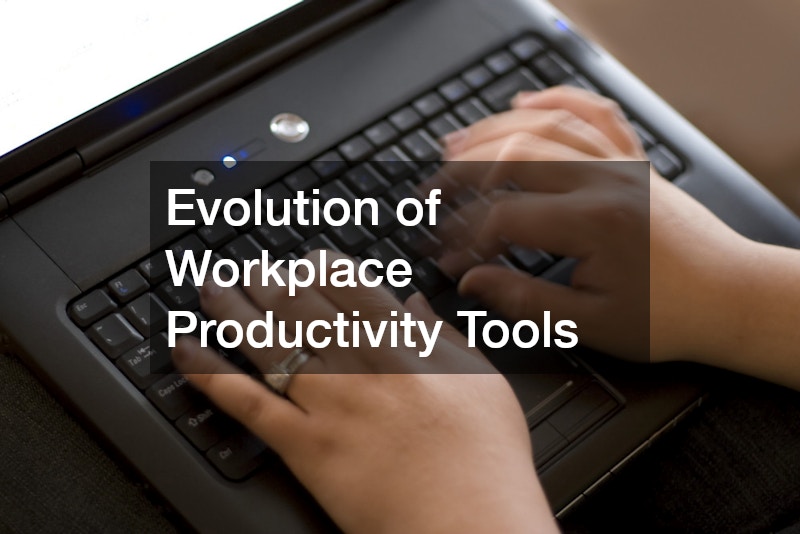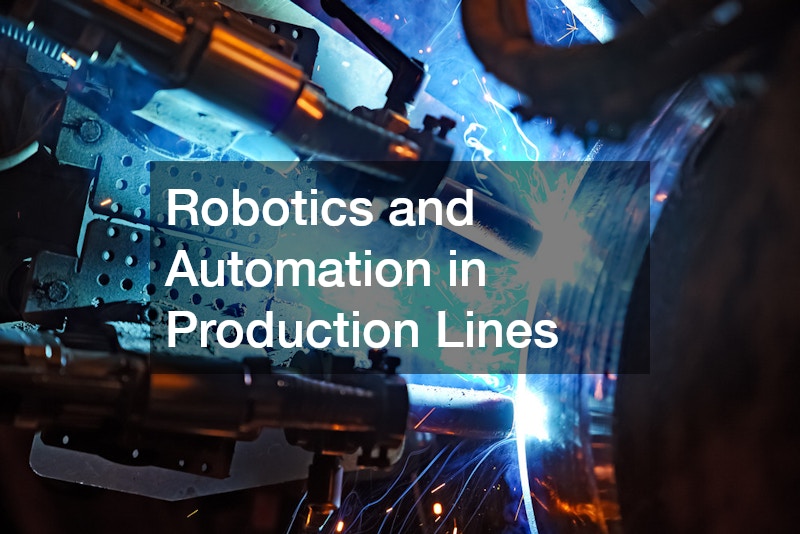In today’s rapidly changing marketplace, increasing productivity in various industries is not just a goal – it’s a requirement. The ability to integrate next-generation technologies and tools can mean the difference between being ahead of your competition and falling behind. It is important to move beyond the essential equipment for efficiency and competitiveness. This shift streamlines operations and creates new opportunities for growth. We’ll examine how adopting these new technologies is crucial for businesses that want to succeed in today’s economy.
Evolution of Workplace Productivity Tools

The story of the evolution of productivity tools in the workplace is a fascinating chronicle, from manual, labor-intensive instruments to advanced technological marvels of today. This journey highlights humanity’s relentless drive to improve efficiency and effectiveness. It is deeply rooted in the collective desire to optimize work processes.
The evolution of tools matched the progress of industries around the world and in Singapore, ushering in a new era of sophisticated machines that fundamentally changed the way tasks were approached. Each new tool brought about a dramatic increase in efficiency and productivity, as well as a reduction of fatigue for humans. This continuous evolution is more than just a technological advance; it reflects the constant quest for improvement. It transforms the operations of industries, increasing their competitiveness in an increasingly interconnected global economic system.
Technology and Productivity: The Role of Technology
Digital transformation is a major shift in the workplace, bringing new tools and technologies to the forefront. These include Artificial Intelligence (AI), the Internet of Things (IoT), and automation. This is more than an upgrade. It’s a complete revamp of the way industries operate.
Advanced Material Handling Equipment
The advent of advanced material-handling equipment represents a significant improvement in operational efficiency. These innovations powered by electricity are revolutionizing logistics and warehouse management. They increase speed and accuracy while reducing environmental impact and improving safety in the workplace.
This equipment is a major step towards sustainable operations. It highlights the benefits of incorporating eco-friendly technology into industrial processes. Material handling equipment that is up-to-date and enables businesses to streamline their operations while contributing to workplace safety and environmental sustainability.
Smart Inventory Management Systems
AI-powered intelligent inventory management systems are revolutionizing the way businesses manage their stocks. These systems provide unprecedented precision when it comes to optimizing inventory levels and reducing waste via predictive analysis. They also refine supply chain operations. Businesses can use real-time data to ensure optimal stock availability and prevent overstocking and stockouts. This will ultimately drive cost efficiency and improve customer satisfaction.
Robotics and Automation in Production Lines

Automation and robotics have been key to modernizing production lines. Their integration transforms the manufacturing landscape with unmatched precision and speed. The transition is not without its challenges. These include the initial investment and the need for special training. However, the benefits of productivity and quality over the long term are unquestionable. These technologies improve production capabilities, and they open up the door for innovation. They allow companies to respond to complex demands more quickly.
Augmented Reality Training and Maintenance
Augmented Reality (AR), which offers immersive and interactive experiences, is revolutionizing training and maintenance. It improves learning outcomes and increases operational efficiency. AR allows employees to train in a virtual environment without having to be physically present.
AR can also be used to diagnose and visualize issues in unprecedented detail, which reduces downtime and increases equipment durability. This AR application highlights its potential to enhance and evolve traditional maintenance and training methodologies.
Using Next-Generation Tools to Overcome Challenges
The integration of next-generation business tools presents many challenges. These include the large investment needed, the extensive employee training required, and the barriers to technology adoption. By strategically addressing the obstacles, businesses are able to smoothly transition to newer, more efficient systems.
By implementing the technology in phases and exploring funding options, you can reduce investment concerns. Customized training programs will equip your staff with the necessary skills. Fostering an innovation culture also encourages adaptability and a smoother implementation of these technologies. By overcoming these obstacles, companies can leverage the full productivity potential of next-generation tools.
Conclusion
The adoption of these technologies, despite the challenges they present, is a testament to how important innovation is in maintaining efficiency and competitiveness in today’s fast-paced market. Businesses that embrace these innovations will ensure their place in the modern market and contribute to an efficient, productive, and sustainable future. It is impossible to overstate the importance of next-generation tools and their integration into any business that wants to succeed in today’s economic landscape.